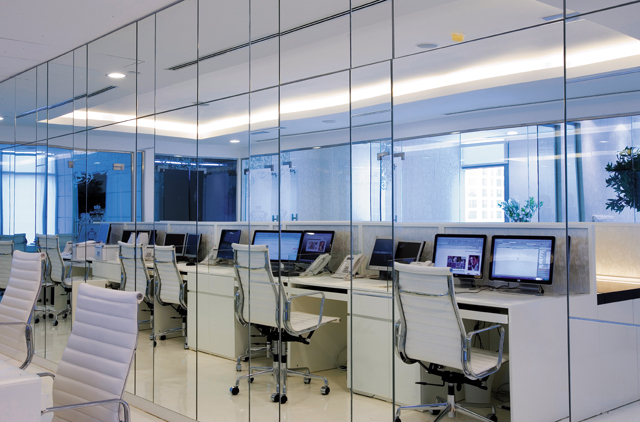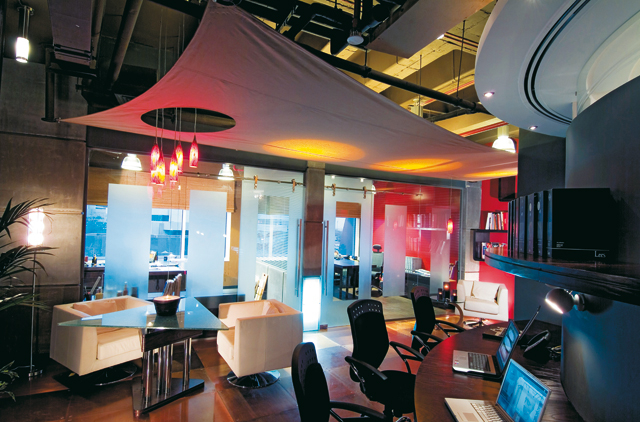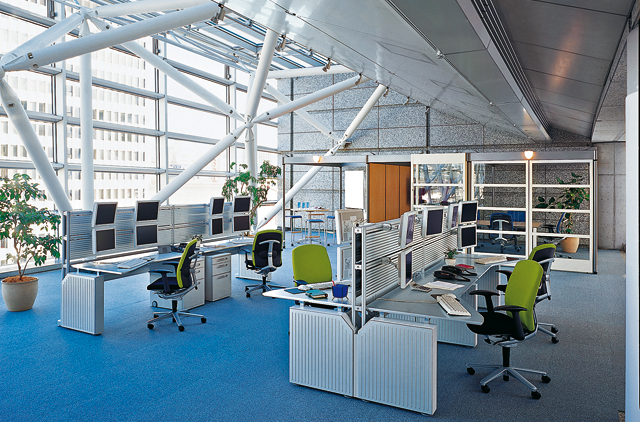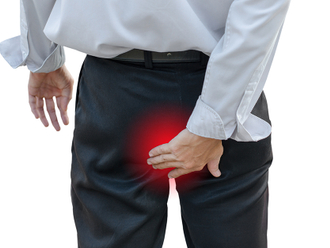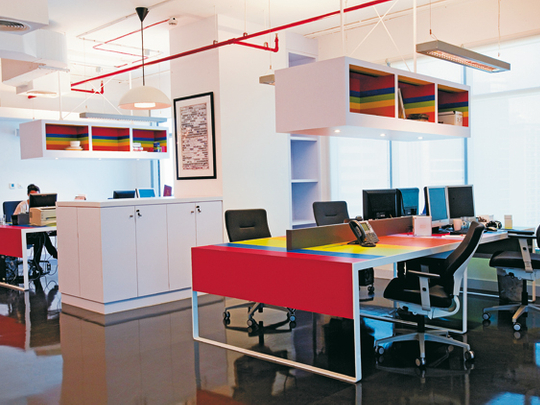
Gone is the standardised maze of cubicles; it is the open plan layout that now holds sway in the modern office. Standard pale wood finishes too are passé and instead, the shiny white ‘iPod' look has emerged as a firm favourite. It is also time to bid adieu to large corner tables for, in today's working environment, a table is no longer a desk, it is a workstation. Behold the new era of ‘hot desking' and ‘hoteling', wireless mobile desks, touchdown areas and break out spaces. Space drives function, and the elements reshaping offices are functionality and ease of use - think mobility, flexibility and sustainability.
With design moving into the future at a fast pace, innovative design for the working space is also gaining momentum. But it is not solely about clean lines or contemporary colours. The right working environment is all about balance. People's energy, creativity and effectiveness increase as the balance between ‘working' and ‘living' improves. Keeping these dimensions separate has become a thing of the past. Says Mallika Nair, designer at OFIS, Dubai, "The approach towards designing a workspace is interlinked with various management strategies prevalent in the market today, the key factor being the current slumping of the economy which provides a challenge for designers to produce innovative, cost effective and unique design solutions. The focus is on creating an interactive, welcoming atmosphere for the end-user, to help reduce the stress of working in a closed environment."
However, office design must also keep pace with changing technology, workforce size, demographics and the work-style trends of tomorrow. There is now a need for wide-open office spaces that are more conducive to teamwork and group collaboration. With wireless technology and increasing laptop usage, employees need no longer be anchored to a desk.
Marketing manager at Bafco, Dubai, says that the direction of office innovation is constantly evolving in the face of technology. "We have seen first-hand how wireless technology is able to control acoustics, lighting and visual requirements. Of particular interest is the D-MOLO workstation from Japan - a desk that can adapt to cater to the most basic requirements to the most advanced ones. It can accommodate multiple monitors, even up to 16 LCD screens. Investing in such furniture will ensure that your office is equipped to manage any technological changes in the near future."
Industry experts note that a significant change in the 21st century working environment is the lack of private enclosed offices. Cubicles are smaller and partitions are lower, primarily because cubicles feel bigger when they offer a panoramic view. This trend has grown from the awareness most of us work in teams and smaller informal groups. As a result, effective workplaces will feature spaces where two, four and six workers can quickly arrange a 20-minute discussion without the formality of reserving space. Flexibility, therefore, assumes a greater role and includes furniture on castors that can be rolled away, and workstations built with desktops that adjust for height.
Mallika Nair says, "Our current project involves an office in with 1,500 employees but just 1,200 workstations. A lot of people will not have permanent offices to work from, bringing in the need for what is called ‘hot desking', a place where people can plug in and start working from wherever they are in the office."
Hani Al Qasem, managing director of Arki Group Design LLC agrees, "Flexibility and mobility play a major role in influencing the layout of the office, especially the relation between meeting rooms and workstations. The number of desks is coming down as part of the new trend, and instead, hot desks for multiple users are taking over." However, some innovations which are de rigueur in many European countries have still not become common here. "One such concept is the height adjustable desk, which can be fixed to suit the height of the employee, ensuring maximum ergonomic comfort," says Nair. "This is a perfect example of how creative ideas coupled with functionality can churn out good design."
In the past, Dubai's soaring office rents had put a premium on design with many organisations looking at customisation as a necessity. However, with rents easing and the launch of the Dubai Metro, industry experts believe this is the right time to establish offices in convenient, easy-to-access locations. A design opportunity also awaits new offices as the trend continues to veer towards smaller spaces, especially as computers and wireless technology become prevalent and smaller. A properly designed workspace makes it easier to accommodate technological changes by simply adding additional components.
"Solid, heavy pieces of furniture have been replaced with sleek, lighter and very functional designs," says Jagan K., business manager at OFIS, Dubai. "There is an inclination towards glass and metal finishes, especially chrome. While previously office furniture was designed to accommodate paperwork, paperless office spaces call for minimalism in design."
"In the UAE, the trend is toward smaller yet well-utilised workspaces," says Grino. "The furniture and colour can also support the design of these by having a flexible work area with colours used in such a way as to create the illusion of extended spaces. Better wireless systems, security measures and lighting fixtures all enhance the work environment."
According to Ajai Dayal, general manager, Retail and Marketing, Easa Saleh Al Gurg Group, "Office furniture should make room for professionals' varying requirements, whether it is storage or functionality, whilst looking stylish, and that means customisation. This allows simple adaptability and space to think."
Of course all this consideration of space goes hand in hand with good design. Offices today are emerging as key branding tools and are taking on a decidedly worldly and sophisticated persona. Often the ‘image' the firm seeks to project starts with the front office area. However, it is also the look and feel of an executive's office that can speak volumes about a company's status and wealth. Top executives look for refined elegance and sleek functionality, with the trend being minimalist. Emphasis is given to clean lines, cleverly-styled functional pieces and high-end materials, including teak and oak veneers, aluminium, some touches of leather.
"One thing to keep in mind when designing an office and accommodating employee space is the future growth of the company," advises Nair. "And with change comes growth. The more flexible the interiors of the office, the easier it is to adapt to future expansion or relocation, or even a change of decor."
An important factor that has an impact on design is employee comfort in the workplace environment. Offices are no longer seen as a liability. Until a few years ago, offices were widely viewed as ‘money poured down the plughole'. But today, workspaces are recognised as being crucial in employee retention. Who wants to return to an unpleasant office day after day?
A study conducted by the British Council for Offices reveals that an employee's workplace is responsible for as much as 24 per cent of his/her job satisfaction level. Moreover, a well thought out office design can decrease absenteeism by 15 per cent and increase productivity between five and 20 per cent.
Says Jagan, "An office is like a second home as the average person spends at least 10 hours at work each day. Therefore, greater emphasis is now being given to staff comfort as it indirectly increases productivity. Colours too play a crucial role in increasing efficiency. Contrasting decors lead to increased creativity."
Nair explains, "Studies reveal that the efficiency of an individual's performance increases sharply when working in an atmosphere that is familiar and less rigid. Ergonomics too play an important role, aiming to reduce work strain that comes from inappropriate working styles or posture, be it at a desk or on a simple chair."
According to Grino, "The people that use the workplace should be the main focus of the design as the physical environment can definitely increase staff engagement, morale and ultimately, productivity. This can be achieved by offering the user control over their environment."
"The race is on for branded luxury furniture in the UAE, and this trend is also being seen in the office segment," notes Ajai Dayal. "For instance, the ergonomic Ferrari chair from Aresline Xten includes dynamic fabric utilised by Olympic athletes for durability and Technogel that moulds to the body's contours and reduces seating pressure and fatigue by more than 60 per cent."
The chair is unique in the way it is designed and manufactured, and is one of the few office chairs in the world with a Dynamic Synchronized Tilting Mechanism where the back and the seat adjust independently of one another at complementing angles.
A new emerging trend in office interiors is the environmental aspect, where green is the new black. More businesses want sustainable, environmentally sensitive offices, and so do their employees. Furniture made from recycled materials, low VOC (volatile organic compound), paints that emit fewer greenhouse gases, organic fabrics and Energy Star business equipment that uses less electricity have become commonplace. Sustainability is a factor that cannot be overlooked, believes Al Qasem, "as it is not only the new approach adopted by most manufacturers, but is also an important criterion to win upcoming projects."
Understanding the negative impact of growth on the environment is the first step towards developing healthy workspaces, believes Mallika Nair. "Sustainable designs shape the future of the corporate world and the wellbeing of the human race at large. Therefore it is the duty of the designer and the client likewise to be responsible enough to incorporate this in the initial design stages."


